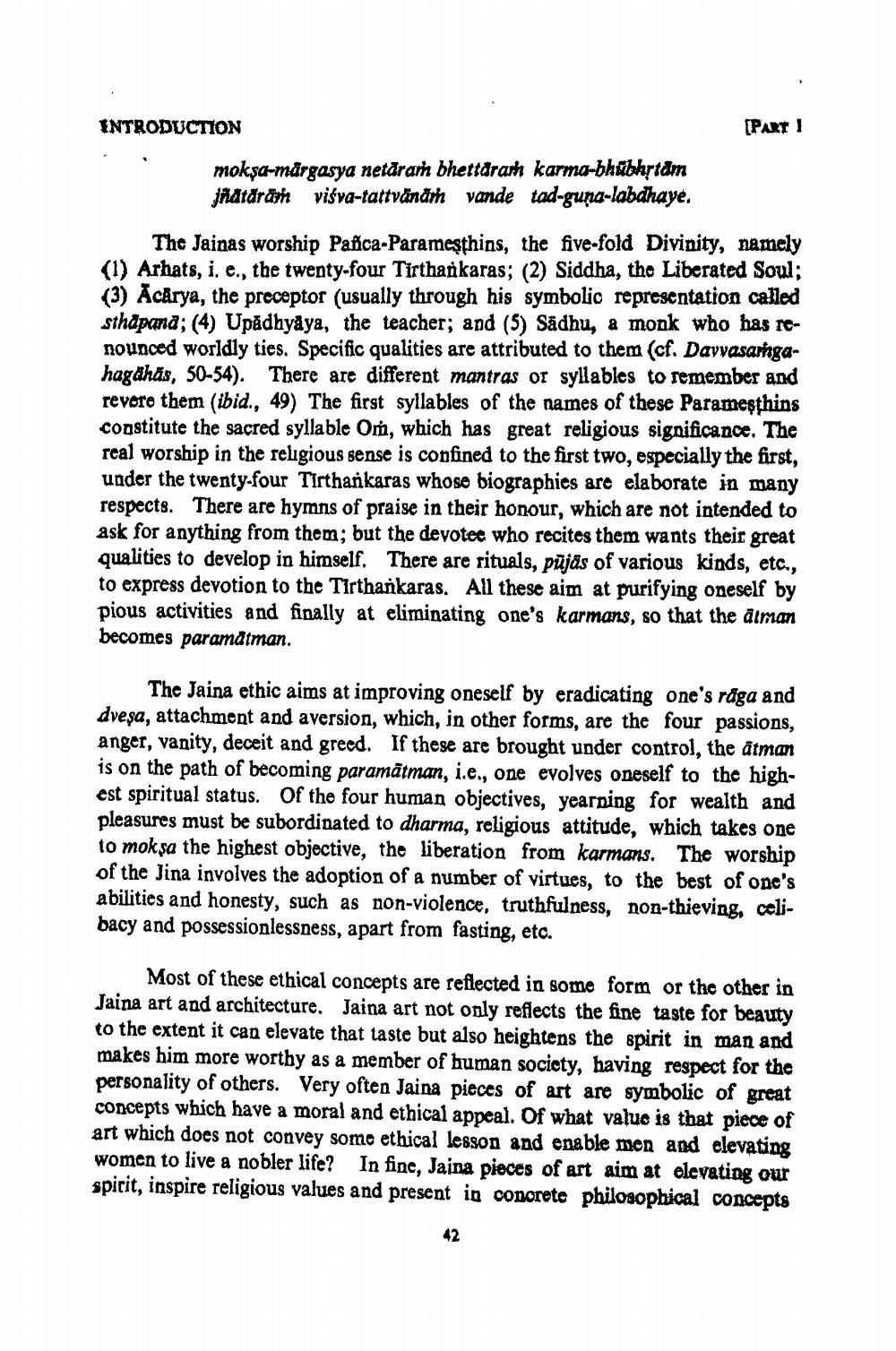________________
INTRODUCTION
mokşa-margasya netāram bhettaram karma-bhubhṛtām jñātārām viśva-tattvänäṁ vande tad-guna-labahaye.
[PART 1
The Jainas worship Pañca-Parameşthins, the five-fold Divinity, namely (1) Arhats, i. e., the twenty-four Tirthankaras; (2) Siddha, the Liberated Soul; (3) Acarya, the preceptor (usually through his symbolic representation called sthapana; (4) Upadhyaya, the teacher; and (5) Sadhu, a monk who has renounced worldly ties. Specific qualities are attributed to them (cf. Davvasargahagāhās, 50-54). There are different mantras or syllables to remember and revere them (ibid., 49) The first syllables of the names of these Parameşthins constitute the sacred syllable Om, which has great religious significance. The real worship in the religious sense is confined to the first two, especially the first, under the twenty-four Tirthankaras whose biographies are elaborate in many respects. There are hymns of praise in their honour, which are not intended to ask for anything from them; but the devotee who recites them wants their great qualities to develop in himself. There are rituals, pujäs of various kinds, etc., to express devotion to the Tirthankaras. All these aim at purifying oneself by pious activities and finally at eliminating one's karmans, so that the diman becomes paramatman.
The Jaina ethic aims at improving oneself by eradicating one's raga and dveşa, attachment and aversion, which, in other forms, are the four passions, anger, vanity, deceit and greed. If these are brought under control, the atman is on the path of becoming paramatman, i.e., one evolves oneself to the highest spiritual status. Of the four human objectives, yearning for wealth and pleasures must be subordinated to dharma, religious attitude, which takes one to mokşa the highest objective, the liberation from karmans. The worship of the Jina involves the adoption of a number of virtues, to the best of one's abilities and honesty, such as non-violence, truthfulness, non-thieving, celibacy and possessionlessness, apart from fasting, etc.
Most of these ethical concepts are reflected in some form or the other in Jaina art and architecture. Jaina art not only reflects the fine taste for beauty to the extent it can elevate that taste but also heightens the spirit in man and makes him more worthy as a member of human society, having respect for the personality of others. Very often Jaina pieces of art are symbolic of great concepts which have a moral and ethical appeal. Of what value is that piece of art which does not convey some ethical lesson and enable men and elevating women to live a nobler life? In fine, Jaina pieces of art aim at elevating our spirit, inspire religious values and present in concrete philosophical concepts
42




